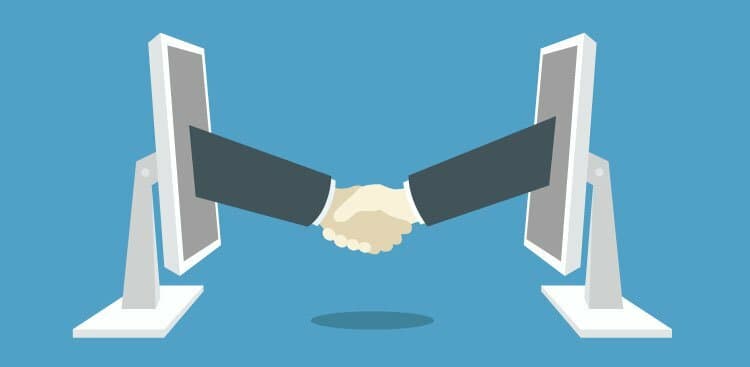While it’s always interesting to receive a LinkedIn invitation, if you don’t know the sender or share any connections, it can often leave you scratching your head—especially if the message hasn’t been personalized. Over the years, I’ve received countless requests to connect with professionals whose careers have really intrigued me. But after accepting said invitation, I’ve never heard from them again, rendering it the virtual equivalent of a ding-dong-ditch.
On the flip side, have you located your ideal mentor or the person you believe has the power to improve your career trajectory? It’s exciting to think a brighter future is just a few clicks away, but as your cursor flashes waiting for you to fire off a well-crafted introduction in LinkedIn’s miniature message box, you may find yourself struggling with how to begin.
If you’ve often wondered how to seamlessly transition from “connection” to ally and advocate, you’re in luck. I spoke with two networking experts who suggested strategies for moving beyond accepting the invitation to cultivating mutually beneficial relationships.
You’ve Received an Invitation to Connect: Now What?
John R. Fugazzie, founder and president of Neighbors Helping Neighbors USA, a job search support and networking organization, encourages those he coaches to accept any and all invitations, as the benefit extends far beyond that connection.
“It’s not just that you and I are connected that makes this valuable, it’s who your connections are connected to. We call that the second level of connection, and that’s really where the multiplying factor of getting your network expanded and growing comes from,” says the mentor, who began using the professional networking platform in 2011 and now has more than 7,000 connections. “If it turns out that the new contact is soliciting for something you’re not interested in, you can always go back and remove them.”
If someone asks to connect with you, and his or her profile piques your curiosity, write back thanking the person for connecting and mention that you’re interested in his or her work as well.
“Be specific in explaining why, and suggest a call or video chat so you can get acquainted,” says Dorie Clark, marketing strategist and author of Reinventing You: Define Your Brand, Imagine Your Future.
As with so many other areas of business, remember the Golden Rule, and be welcoming and willing to help your new connection.
“If they’re in your city, respond by inviting them to coffee or an upcoming event—a dinner party you’re throwing, or a panel discussion you’re attending—that you think they might also enjoy,” Clark suggestss. “Odds are, they’ll appreciate your invitations because they reached out to you for a reason. If you don't hear back from them, don’t get discouraged. Instead, put a note in your ‘tickler file’ and follow up with another invitation a few months later. Circumstances may have changed, perhaps they finished a big project and are less busy, and they may be open to meeting.”
Fostering a mutually beneficial relationship may be easier than you think. Be forthcoming, respectful, and interested in giving as well as getting.
“Most people, if they understand your purpose, will want to help you,” Fugazzie says. “We found out through just our group leadership that the amount of people out there willing to help you is tremendous, but you have to make it easier for them to help you. They can’t take time away from their day to figure out what it is you want, so any kind of descriptive information you can pass forward when you make this connection is very valuable.”
You’ve Initiated the Connection: What Next?
Similar advice applies when you’ve found someone you want to reach out to: The more specific you can be, the better. In other words, rather than use the generic, “I’d like to add you to my professional network,” give some careful consideration to composing a thoughtful message.
“Especially if you don’t know them already, it’s important to explain to someone why, specifically, you want to connect with them on LinkedIn,” Clark reasons. “Make it a point to mention something specific—that you read an article where they were featured and were impressed by their comments, or you heard them speak at a conference and admired their point of view.”
If your invitation to connect is accepted, that’s a great start, but it doesn’t give you license to start asking for favors immediately. Rather than suggesting a meeting or phone call right out of the gate, Clark recommends “liking” or commenting on your new contacts’ updates. Set up Google alerts with their names or use a service like Newsle, and “ping” people with a quick note to compliment them if you see that they’ve been featured.
Later, Clark says, you can amp up the relationship by asking them for advice—with the caveat that this should be a quick ask, not something elaborate or drawn out.
“Ask them a simple question that 1) they are uniquely qualified to answer, and you explain why that’s the case; and 2) they can answer in three to four minutes,” she notes. “You don’t want to provide them with your life story; you want to ask something simple but thoughtful, such as ‘If I’m seeking a job in X industry, would it be a better move to do Y or Z?’”
Without expending too much effort, they can help you, and that process builds goodwill. Clark points to psychologist Robert Cialdini, who explains that people view you more positively if they’ve done you a favor because they begin to think of themselves as your ally.
From there, the branding expert recommends reporting back on your progress to let your new connection know how you used their advice, so they understand you’re really listening and are, therefore, worth their time investment.
Hoping for a face-to-face encounter? Scour their news feed for mentions of events or conferences they’re attending, or ask them if they’ll be at a particular conference that seems likely, Clark advises. After you’ve found the opportunity, make it a point to go hear them speak or otherwise arrange to meet them for two minutes to say hello.
“Once you’ve connected in person, you’ll be a ‘real person’ to them,” Clark says. “At this point, now that you’ve built up the connection, you can try to make it more substantial by asking for a quick call or coffee, and they will be far more likely to say yes.”

